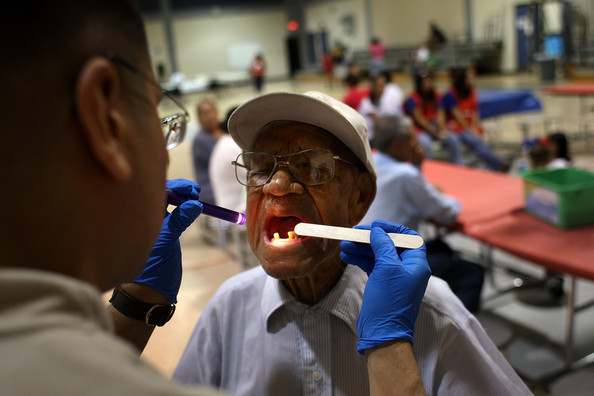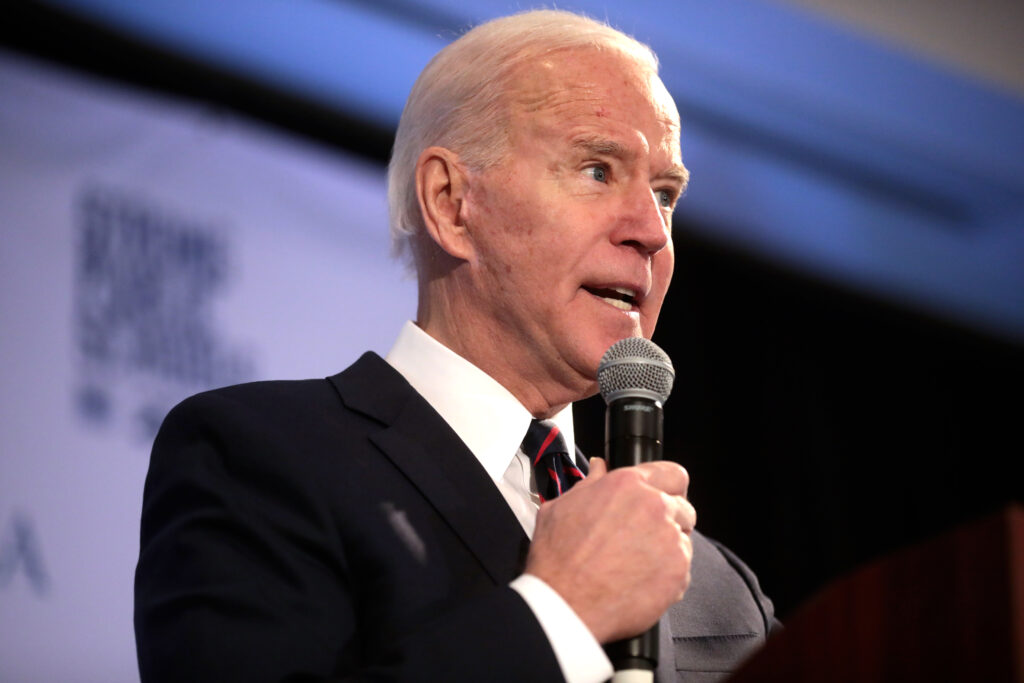Here’s a simple question: How large will Medicaid be under Obamacare? And a simple answer: We have no idea.
A new Health Affairs article deals with this problem, describing “major uncertainties” for policy makers in expectations about Medicaid enrollment.
We created a simulation model using two nationally representative data sets to determine the range of reasonable projections, estimating eligibility, participation, and population growth using prior research and our data.
Our model predicted that the number of additional people enrolling in Medicaid under health reform may vary by more than 10 million, with a base-case estimate of 13.4 million and a possible range of 8.5 million to 22.4 million.
Estimated federal spending for new Medicaid enrollees ranged from $34 billion to $98 billion annually, and we projected that 4,500–12,100 new physicians will be needed to care for new enrollees.
In the end, Medicaid enrollment will be determined largely by the extent to which federal and state efforts encourage or discourage eligible people from enrolling.
Part of the problem here is the Congressional Budget Office, whose work is frequently accepted wholesale by the political community despite whiffing thoroughly in predicting the costs of prior entitlement programs. As this report notes:
In March, the Congressional Budget Office estimated that 16 million will enroll by 2019 if the health law is implemented. The CBO did not offer a range for its enrollment estimate, nor did it estimate the increase in annual federal spending in its most recent analysis.
The CBO has not published a full explanation of how it reached its estimates.
The key assumption on the part of the Harvard-based researchers is a 62 percent uptake in the number of newly eligible adults who enroll in Medicaid. While the CBO hasn’t publicized its rate, the researchers believe it assumed roughly 55 percent uptake.
What’s startling to consider about this is the sheer amount of taxpayer money that depends on where these percentages actually end up. The open-ended nature of this subsidized care is exactly what doomed the Massachusetts program to overruns–now, it means every state budget is up against the wall. And they don’t have a clue how much need is coming their way.
— Benjamin Domenech
IN THIS ISSUE:
IN OHIO, ISSUE 3 IS LIKELY TO WIN TUESDAY
The latest polling indicates Ohio may become the most recent state to take on the individual mandate at the state level, in an act that is a powerful symbol of the American rejection of this idea.
“Health care decisions should be made between patients and doctors. Not politicians and bureaucrats,” said Jeff Longstreth, campaign manager for Ohioans for Healthcare Freedom. “Ohioans are rising against that mandate and want to make their voices heard.”
According to campaign finance reports, Longstreth’s group has raised $632,000 in cash and in-kind contributions for Issue 3. In contrast, the pro-Issue 2 and anti-Issue 2 campaigns have raised more than $38 million in cash and in-kind contributions. The No On Issue 3 campaign committee has received at least $28,000 in contributions.
Colleen Dundon, 48, of Perry Township, a member of Stark County 912 Patriots, said she collected several hundred petition signatures to put the amendment on the ballot last year.
“If they can mandate we buy health insurance, what else are they going to mandate we buy?” Dundon asked.
Supporters say passage of Issue 3 would strengthen the case before the U.S. Supreme Court that the Affordable Care Act is unconstitutional because the U.S. Constitution does not give Congress power to impose the individual mandate.
SOURCE: CantonRep.com
DOJ SAYS SUPREME COURT CANNOT STRIKE DOWN INDIVIDUAL MANDATE ALONE
You might have missed this, but President Barack Obama’s Department of Justice agrees the Supreme Court cannot simply strike down the individual mandate without also striking down other provisions:
The Justice Department argued this week that if the Supreme Court strikes down the healthcare law’s individual mandate, it also has to ax two popular provisions of the law.
Courts have reached differing conclusions on the question of “severability” — whether finding the mandate unconstitutional requires striking down the rest of the law. The lower court in the case now before the Supreme Court said the mandate could be struck down on its own, without affecting other parts of the healthcare law.
But the Justice Department said in a Supreme Court brief this week that two other provisions have to be struck down if the high court finds the mandate unconstitutional.
The court would also have invalidate policies that require insurers cover people with pre-existing conditions and prohibit them from charging those people higher premiums, the brief says.
Without the mandate, Justice said, those policies “would not advance Congress’s efforts to make affordable coverage widely available.”
SOURCE: The Hill
GOVERNORS TO SEBELIUS ON PARTNERSHIP MODEL
A rather schizophrenic letter from Pat Quinn and Terry Brandstad on health exchanges and the “partnership model” HHS has discussed:
Many states continue to study exchange options, but those considering a partnership model generally fall into two categories: 1) Those that view the partnership as a way to implement an exchange in the short term while building capacity to fully run the exchange themselves; and 2) Those planning to operate a state-based exchange while the federal government continues to handle functions the states view as naturally federal.
Under the proposed partnership models, states would be required to cede many operations that have been traditionally handled at the state level, such as Medicaid eligibility, regardless of whether they implement a state-based exchange, implement a state-federal partnership model or turn over responsibility for the exchange entirely to the federal government. States have invested taxpayer resources in state-based eligibility systems since the Medicaid program began and want to avoid duplication of effort.
The proposals also appear to preclude states interested in exchanges from obtaining funding to establish new state exchange functions after 2012. States are concerned that this construction would lock states into an all-or-nothing approach where the state’s role in operating the exchange would be limited with little opportunity to gain additional operational authority if a state so chooses at a later date. As previously mentioned, many states are undecided on implementation strategies because of various uncertainties, including the lack of final rules and regulations.
To best facilitate a state-federal partnership, we suggest the federal government offer states the option of assigning functions where states have little or no current operational role such as: determination of eligibility and appeals for federal tax credits and subsidies; facilitation of advance payment of premium tax credits by the Department of the Treasury to insurers; enforcement of the individual responsibility provisions; and reporting of user and employer data to the Department of the Treasury. In addition, federal assistance in pre-certifying and identifying information technology products and services that meet PPACA requirements could facilitate some states’ efforts to design information technology systems necessary to operate an exchange. For example, federal development of software that could be provided to states, such as a benefit calculator, would be very helpful. Alternatively, some states not considering a partnership model will offer their own unique state-run health exchanges and will not want to rely on the federal government for any aspect of its functionality.
Regardless what corner you’re coming from, this letter is full of reluctance. Not a good sign for the administration.
SOURCE: National Governors Association
ACTIVISTS ATTACK CONNECTICUT EXCHANGE BOARD
Too many insurers, not enough “consumer advocates.”
Some advocates have been urging lawmakers to amend law that governs the exchange to add board members who represent consumers. Others want three board members who have held leadership positions at insurance companies to be replaced, saying their appointments violate the state law that established the exchange, which prohibits board members from being affiliated with insurers or other health care industry groups.
“The biggest danger is that the board is set up to protect insurance companies instead of consumers, or to enrich insurance companies instead of protecting consumers,” said Tom Swan, executive director of Connecticut Citizen Action Group. He and other critics of the board are exploring administrative and legal options if the governor and legislators don’t replace the board members with insurance backgrounds.
But some involved in implementing health reform say it’s important to have people who understand insurance involved in developing the exchange, which will serve as a marketplace for individuals and small businesses to buy health care coverage beginning in 2014 …
The board has eight members appointed by the governor or legislative leaders, and six members representing state agencies or government. The three members that have drawn the most scrutiny are Mickey Herbert, who retired last year as CEO of the insurer ConnectiCare; Robert Scalettar, a physician who has held top medical positions at Aetna Better Health, AmeriChoice by UnitedHealthcare, and Anthem Blue Cross and Blue Shield; and Mary Fox, a former senior vice president for Aetna Product Group.
SOURCE: Ct Mirror
OBAMA ADMINISTRATION APPROVES MASSIVE MEDICAID CUTS
Go right ahead, California:
The state’s Democratic governor, Jerry Brown, this summer requested the authority to slash Medicaid payments to providers by 10 percent to save $623 million this year and next. Cindy Mann, director of the federal Center for Medicaid and State Operations, said Thursday that the Centers for Medicare and Medicaid Services has partially approved the request while rejecting cuts that would have affected beneficiaries’ access to care …
According to the California Department of Health Care Services, the approved cuts include:
- A 10 percent provider-payment reduction on a number of outpatient services, including physicians, clinics, optometry, therapy, laboratories, dental, durable medical equipment and pharmacy;
- A new 10 percent provider-payment reduction for freestanding nursing and adult subacute facilities; and
- A 10 percent provider-payment reduction and rate freeze for distinct part/nursing facility-B services.
… Brown put the administration in a tight spot with his request to slash the state’s Medicaid budget by $1.4 billion to help plug a $26.6 billion budget gap, the worst of the 50 states.
In addition to the $623 million cut to provider payments, the governor wants the authority to require Medicaid beneficiaries to make $5 copays for physician visits and $50 copays for emergency department visits (measures that would save $511 million) and limit most beneficiaries to seven doctors’ visits per year (which would save $41 million).
SOURCE: The Hill
EFFORTS TO REPEAL MEDICAL DEVICE TAX GROW
An encouraging sign.
Rep. Erik Paulsen’s (R-Minn.) ongoing effort to repeal the medical device tax seems to be gaining momentum, now that 204 members of the U.S. House of Representatives have signed on to his bill.
Paulsen has said that the tax, slated to be implemented as part of the Patient Protection & Affordable Care Act after 2013, will reduce medical technology jobs across the country.
“This may be the most anti-innovation piece of legislation to come along in some time,” Paulsen said in a letter jointly written with Rep. Jim Gerlach (R-Pa.) last month promoting the “Defend Medical Innovation Act,” which seeks to block the 2.3 percent tax on medical device company revenues prescribed by President Barack Obama’s health care overhaul last year.
Paulsen and Gerlach wrote that the measure will be directly responsible for some 43,000 lost jobs, putting American global competitiveness in peril. Paulsen’s home state of Minnesota is home to some of the largest device makers, including Medtronic Inc. and St. Jude Medical Inc.
SOURCE: Medical Technology Caucus
Grace-Marie Turner on lessons from Mitt Romney’s Massachusetts:
Does he really mean he sees Massachusetts as a model for his “replacement” plan even as he insists it’s not?
When challenged by his fellow candidates, the usually unflappable Romney stumbled. Former Pennsylvania Sen. Rick Santorum hit Romney over costs.
“What you did is exactly what Barack Obama did: focused on the wrong problem. … You expanded the pool of insurance without controlling costs. You’ve blown a hole in the budget up there. And you authored in ObamaCare, which is going to blow a hole in the budget of this country.”
Romney acknowledged “I didn’t get the job done in Massachusetts in getting the health care costs down,” but added it’s “something I think we have got to do at the national level. I intend to do that.”
But you “didn’t do it” in Massachusetts, Santorum shot back.
Health costs in Massachusetts are higher than in any other state: Health spending is rising 15 percent faster than the national average. Economists from Stanford and Columbia universities have estimated that the state health-care law was responsible for hiking premiums by as much as 6 percent.
Romney advisor Tevi Troy has the response. Either way, it seems clear the costs of health care in Massachusetts have not been helped at all by Romney’s approach.
SOURCE: GazetteXtra.com





